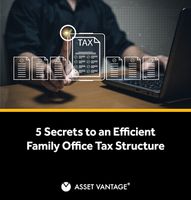Explore web search results related to this domain and discover relevant information.
Find if you need to pay federal employment tax for a family caregiver, babysitter, nanny, or housekeeper with the Household Employer's Tax Guide.
Tax information for parents, including tax credit for children and other dependents, Earned Income Tax Credit and tax benefits for education.Parents have special tax situations and benefits.Understand how that affects you and your taxes.Get general information about how to file and pay taxes, including many free services, by visiting How to file your taxes: step by step.
A 2 part payment that helps with the cost of raising children.
You need to meet eligibility requirements to get Family Tax Benefit (FTB).How much Family Tax Benefit (FTB) you may get.Complete the following steps to claim Family Tax Benefit.Your options and obligations for Family Tax Benefit.

The conveyancing firm that Angela Rayner used to complete her purchase of an £800,000 flat on the south coast has said it did not offer her tax advice and completed her stamp duty return based only on information she provided. Joanna Verrico, the head of a small, family-run firm in Kent, said ...
The conveyancing firm that Angela Rayner used to complete her purchase of an £800,000 flat on the south coast has said it did not offer her tax advice and completed her stamp duty return based only on information she provided. Joanna Verrico, the head of a small, family-run firm in Kent, said on Thursday it had not provided any advice to the deputy prime minister on how much stamp duty to pay.Supporters say the deputy prime minister believed she did not need to declare an interest in her family house in Greater Manchester because she had sold her stake in it to a trust in the name of her disabled son. However, the terms of that trust meant she retained an interest in the property for tax purposes.She is working hard now to rectify that, in contact with HMRC, to make sure that the correct tax is paid. “Anyone that saw Angela’s statement yesterday, saw her interview yesterday, I think will have a lot of sympathy with some of the challenging family circumstances around this, around Angela’s disabled son.”“That was following new, fresh legal advice, but as I say there were limitations on what could be discussed given the existence of a court order that was there to protect her family and to protect her son.” · On Wednesday night, Rayner’s Hove flat was vandalised with graffiti saying “tax evader”, an act her spokesperson called “unjustifiable and beyond the pale”.


UK Chancellor of the Exchequer Rachel Reeves is considering taxing high-value family homes at the point of sale as she looks for ways to plug a multibillion-pound hole in the upcoming budget.
The move would make expensive primary properties subject to capital gains tax, ending a long-standing exemption, according to a government official who asked not to be named given the sensitive nature of discussions. The Times was first to report the proposal, dubbing it a “mansion tax.”
WASHINGTON, D.C. – America’s working families will keep more of their hard-earned income with an average $1,300 tax cut compared to...
WASHINGTON, D.C. – America’s working families will keep more of their hard-earned income with an average $1,300 tax cut compared to what they pay today, thanks to policies like the increased Standard Deduction and boosted Child Tax Credit in The One, Big, Beautiful Bill that passed in the U.S.The Ways and Means Committee heard from working parents all over America about how important lowering taxes is to helping them provide for their children. This bill stops the largest tax hike on working families in American history and instead gives them a $1,300 tax cut.Additional impact of tax relief delivered in The One, Big, Beautiful Bill: The typical family will get up to $13,300 in additional take-home pay.Puts American families in control of their health care by expanding health savings accounts to millions of Americans and cementing into law a Trump Administration policy that offers more choice and flexibility for health coverage options. Starts building financial security for America’s children at birth with the creation of new Trump savings accounts. · The Doubled Standard Deduction Meant a Tax Cut for Working Families: The One, Big, Beautiful Bill increases and makes permanent the doubled standard deduction from the 2017 Trump tax cuts, helping the 91 percent of taxpayers who take advantage of this tax relief.


The tax-free family home is the “elephant in the room” when it comes to reform.
The tax-free family home is the “elephant in the room” when it comes to intergenerational fairness, arguably contributing more to inequality and unproductive investment than any other concession.The family home is not subject to capital gains tax or counted for the age pension.Treasurer Jim Chalmers lit a fuse under the debate about the taxation of wealth when he declared last month that there was consensus at his economic roundtable on the need for intergenerational fairness and a fair go for working people.Chatter quickly turned to what the Labor government might consider taxing more to fund elevated government spending and pay for tax relief for working-age people struggling to afford to buy homes.

What is the French taxation model that is on the table for the TIF package - The "family" logic of the quotient familial - Its philosophy and the scope for implementation
Shortly before the Thessaloniki International Fair (TIF), a new term has started circulating in government circles — one until now mostly confined to French tax textbooks: quotient familial. This model, in place in France for decades, is now under serious consideration for adaptation in Greece.At its core, the system offers a new way of taxing families with children, accounting — in a structured and measurable way — for their specific needs and lowering their overall tax burden. In practice, it reshapes the entire philosophy of income taxation: no longer focused only on the individual’s income, but on the household’s composition and responsibilities.The French model is deceptively simple but transformative: the family, not the individual, is the basic tax unit. Household income is declared in total, then divided into “units” assigned to family members. A single person equals one unit, a couple two units, each of the first two children adds half a unit, and the third child a full unit.As the number of units grows, the taxable income per unit decreases — and so does the tax rate. The effect is immediate. Families with children automatically pay less tax, without applications, allowances, or red tape. Extra money simply shows up in parents’ paychecks.

Unlock the secrets to creating an efficient Family Office Tax Structure. Discover 5 strategies to optimize your financial management.
These five secrets begin with the entity choice that quietly shapes every tax outcome and extend all the way to the accounting discipline that determines after-tax results. The foundation of an efficient family office tax structure is not technology or reporting dashboards.Without this, even the best strategies will not deliver lasting tax efficiency. Structuring a family office is therefore a two-step process. First, families decide how they want their office to operate: in-house, shared, or virtual.Single Family Office (SFO): The “build” model. A dedicated in-house team manages the family’s financial affairs—from investments to tax planning and administration. Best suited for very large pools of capital, where control and privacy outweigh high operating costs.Multi-Family Office (MFO): The “buy” model. Multiple families pool resources for comprehensive services, ranging from tax compliance and estate planning to philanthropy. MFOs provide cost-efficiency with shared expertise.
Michigan tax authorities moved swiftly once Reuters brought the matter to their attention. Officials immediately revoked the homestead exemption claimed by the Pulte family on their Michigan property, demonstrating that no one is above the law when it comes to tax compliance.
Homestead exemptions represent a crucial tax break designed to help homeowners reduce their property tax burden on their single primary residence. These exemptions can save property owners thousands of dollars annually, but they come with strict residency requirements that the Pulte family appears to have flagrantly ignored.The illegal dual exemptions came to light following a comprehensive Reuters investigation that began after Bill Pulte made public accusations against Federal Reserve officials regarding similar tax issues. The irony of the situation became apparent when investigators discovered that Pulte’s own family members were engaged in the exact same behavior he was publicly condemning.Michigan tax authorities moved swiftly once Reuters brought the matter to their attention. Officials immediately revoked the homestead exemption claimed by the Pulte family on their Michigan property, demonstrating that no one is above the law when it comes to tax compliance.He specifically criticized her for renting out a home that she had declared as her primary residence for tax purposes. The discovery that his own family members were engaged in nearly identical behavior has exposed what critics are calling breathtaking hypocrisy.


Middle-class families who file income taxes with the standard deduction might have 10 tax breaks in 2025.
Working middle-income Americans won’t need to itemize to claim these tax deductions and credits — if you qualify. ... When you purchase through links on our site, we may earn an affiliate commission. Here’s how it works. ... What is “middle-class”? Although definitions might vary, the Pew Research Center might have an answer. ... report found that a family of three could be considered in the “middle” of upper and lower incomes when annual household earnings are from $56,600 to $169,800*.Although the CDCTC has a low beginning phaseout limit of $15,000, it might be considered a “middle-class” tax break for two reasons. First, the CDCTC is nonrefundable (meaning low-income families who are owed a tax refund can't receive the full benefit).The federal adoption credit was recently made partially refundable under Trump's new tax bill in 2025. ... National Council for Adoption (PDF) surveyed more than 4,200 adoptive parents across all 50 states and Washington, D.C. Of the responses, more than half had income above $75,000, which is within the Pew Research Center’s “middle income” range. Families who finalize an adoption in 2025 can save up to $17,280 in qualified child expenses.This includes a new refundable portion of the credit worth up to $5,000, meaning that if you owe no federal tax, you might still get up to that amount refunded to you after you file. ... Qualified adoption costs eligible for the credit include adoption fees, court costs or legal expenses, any travel costs, home study fees, and expenditures associated with re-adoption in your home state (if foreign adoption applies). Families adopting a U.S.

Family offices are key to managing ultra-high-net-worth wealth, but navigating the complex tax landscape remains a major challenge for these entities.
Family offices play a crucial role in managing and preserving the wealth of ultra-high-net-worth families. However, navigating the complex tax landscape can be a significant challenge for these entities. With the growth in private wealth and a rapidly evolving economic environment, tax efficiency has become integral to preserving wealth across generations.The foundation of any tax strategy begins with selecting the most appropriate entity structure. Family offices are typically organized as limited liability companies (LLCs), partnerships, corporations (C or S) or trusts, and each structure has distinct tax implications.Selecting the wrong structure can lead to unforeseen tax liabilities. Therefore, it is critical for family offices to analyze their operational goals alongside current and potential tax obligations to make informed entity decisions.Meanwhile, dividends that meet specific conditions may also benefit from reduced tax rates. ... While these investments are often advantageous due to favorable regulations on long-term holdings, compliance with Internal Revenue Code section 1061, which enforces a three-year holding period to qualify for these benefits, demands attention. ... Real estate investments allow family offices to leverage depreciation deductions and capital gains deferral through 1031 exchange rules.
Our mission is to simplify the complexities of tax preparation and planning, ensuring you achieve the best financial outcomes with peace of mind. ... Family-Focused Expertise: We understand the unique tax challenges and opportunities that come with family life.
Our experienced team offers tailored advice and strategies to optimize your family’s financial well-being. Comprehensive Services: From tax preparation and planning to estate management and bookkeeping, we offer a full range of services designed to address all your tax needs under one roof.Personalized Attention: We take the time to understand your specific situation and goals, providing customized solutions that align with your financial objectives and family needs. Trusted Guidance: With our commitment to accuracy, transparency, and compliance, you can trust us to navigate the complexities of tax regulations and maximize your financial benefits.At Family Tax Inc. we specialize in providing personalized tax solutions tailored to meet the needs of families and individuals.Let us help you manage your taxes efficiently and effectively. Contact us today to schedule a consultation and experience the difference of a tax firm dedicated to serving your family’s needs.
Florida Department of Revenue - The Florida Department of Revenue has three primary lines of business: (1) Administer tax law for 36 taxes and fees, processing nearly $37.5 billion and more than 10 million tax filings annually; (2) Enforce child support law on behalf of about 1,025,000 children ...
Florida Department of Revenue - The Florida Department of Revenue has three primary lines of business: (1) Administer tax law for 36 taxes and fees, processing nearly $37.5 billion and more than 10 million tax filings annually; (2) Enforce child support law on behalf of about 1,025,000 children with $1.26 billion collected in FY 06/07; (3) Oversee property tax administration involving 10.9 million parcels of property worth $2.4 trillion.
Tax credits for low-income individuals, families, dependents and students
The Earned Income Tax Credit (EITC) helps low- to moderate-income workers and families.The Child Tax Credit helps families with qualifying children.Credits can help reduce your taxes or increase your refund.

Paying salaries to relatives from a business can trigger scrutiny under Section 40A(2) of the Income Tax Act. Experts say such payments are legal if properly documented, within fair market value, and justified by business needs.
Tax professionals point out that the courts have repeatedly emphasized the importance of FMV over relationships in such cases. In ACIT v. Amar Plastics (ITAT Mumbai, 2016), the tribunal ruled against disallowance because the AO failed to demonstrate that payments to relatives exceeded FMV. The decision clarified that family ties alone cannot justify a tax adjustment.No records, evidence, or tax compliance is maintained. ... The case highlights an important takeaway: paying salaries to relatives is not prohibited, but it must be defensible. Businesses should paper roles carefully, preserve records such as emails and meeting notes, maintain FMV evidence through salary surveys or comparable quotes, and ensure TDS deduction with consistency in returns. Done correctly, family members on the payroll can stand up to tax scrutiny and qualify as legitimate business expenses.In a recent tax assessment, a business proprietor named Rajesh was hit with an additional tax demand of Rs 1.5 lakh after the assessing officer (AO) disallowed the Rs 6 lakh annual salary he had paid to his son.According to a post by tax advisory platform Tax Buddy on X (formerly Twitter), the AO argued that the transaction fell under Section 40A(2)(b) of the Income Tax Act, which governs payments made to “specified persons,” including relatives.

Tax planning is not just about minimizing liabilities; it’s about aligning financial affairs with the family’s goals and protecting the family’s financial future from erosion.
Manages risk: Every investment carries tax implications, from carried interest to ordinary income. Supports wealth preservation: Family office structures, such as a family limited partnership or limited liability company, provide control, discounts, and protection against double taxation.A US$100 million estate without estate and tax planning may lose US$40 million to taxes. With GRATs or intra-family loans, family offices reduce exposure, securing assets for younger family members and future generations.Unlike general wealth managers, a family office integrates: Tax planning and estate planning for efficient transfer of assets.For families with an operating company, the family office separates business expenses from family office expenses, ensuring tax court challenges do not disallow deductions. ... Aligning different family members on dividends, reinvestment, and tax implications.
The Child Tax Credit helps families with qualifying children get a tax break.
The Child Tax Credit is a tax break you can take for qualifying children. Learn who qualifies and how to claim this credit.You qualify for the full amount of the 2024 Child Tax Credit for each qualifying child if you meet all eligibility factors and your annual income is not more than $200,000 ($400,000 if filing a joint return).You may be able to claim the credit even if you don't normally file a tax return.You can claim the Child Tax Credit for each qualifying child who has a Social Security number that is valid for employment in the United States.
A family trust is a tool used to determine the transfer of a family member's assets once they've passed. Income associated with a family trust is reported by beneficiaries using Form K-1. If you received income from a family trust last year, it's important to understand how this can affect ...
Written by a TurboTax Expert • Reviewed by a TurboTax CPAUpdated for Tax Year 2024 • August 2, 2025 2:54 AM ... A family trust is a tool used to determine the transfer of a family member's assets once they've passed. Income associated with a family trust is reported by beneficiaries using Form K-1.Income distributed to beneficiaries is reported to the beneficiaries on Form K-1. Beneficiaries input information from Form K-1 into their personal tax returns. While each family trust is different, they all generally come with tax liabilities for either beneficiaries or grantors.It isn't a specific type of trust beyond defining who the assets go to. Family trusts can come in different types, such as revocable and irrevocable trusts. If a taxable estate value is $13,610,000 or less (tax year 2024), the estate doesn't have to pay the estate tax upon the death of the estate owner.If a non-grantor trust has more than one beneficiary, the trust will divide the income between each beneficiary based on the terms of the trust. Then, it will issue a Form K-1 to each beneficiary specify each individual's portion of the income. Beneficiaries input information from Form K-1 into their personal tax returns. An entire family can benefit from establishing a family trust.
House Republicans and President Trump kept our promise to deliver the most pro-worker, pro-family tax reform in history. The Working Family Tax Cuts (OBBB) put hardworking Americans first with real relief for families, small businesses, and seniors.Bigger Paychecks for American Workers
This once-in-a-generation investment will help rural hospitals across the commonwealth modernize, improve services, and ensure long-term sustainability—so families in small towns can get the care they deserve. ... President Trump and House Republicans delivered on our promise to eliminate tax on tips through the Working Family Tax Cuts.Transportation & Delivery: Parking and Valet Attendants; Taxi and Rideshare Drivers and Chauffeurs; Shuttle Drivers; Goods Delivery People; Personal Vehicle and Equipment Cleaners; Private and Charter Bus Drivers; Water Taxi Operators and Charter Boat Workers; Rickshaw, Pedicab, and Carriage Drivers; Home Movers. ... The Working Family Tax Cuts deliver relief where it matters most—helping families afford everyday life, strengthening small businesses, protecting seniors, rooting out fraud, and making a historic investment in rural hospitals.Historic Tax Relief for Families: Permanent lower tax rates so Americans can keep more of their hard-earned money, including an average tax cut of 15% for Americans earning $15,000–$80,000 per year.Higher Wages: The Working Family Tax Cuts are projected to increase take home pay in Pennsylvania by up to $12,500 per family.
The audit report must be provided ... and Families within 180 days after completion of the eligible charitable organization's fiscal year; and · A copy of the eligible charitable organization's most recent federal Internal Revenue Service Return of Organization Exempt from Income Tax form (Form ...
The audit report must be provided to the Department of Children and Families within 180 days after completion of the eligible charitable organization's fiscal year; and · A copy of the eligible charitable organization's most recent federal Internal Revenue Service Return of Organization Exempt from Income Tax form (Form 990).(a) The Department of Children and Families shall designate as an eligible charitable organization an organization that meets all of the following requirements: Is exempt from federal income taxation under s.(d) Notify the Department of Children and Families within 5 business days after the eligible charitable organization ceases to meet eligibility requirements or fails to fulfill its responsibilities under this section. (e) Upon receipt of a contribution, provide the taxpayer that made the contribution with a certificate of contribution.A certificate of contribution must include the taxpayer's name and, if available, its federal employer identification number, the amount contributed, the date of contribution, and the name of the eligible charitable organization.



